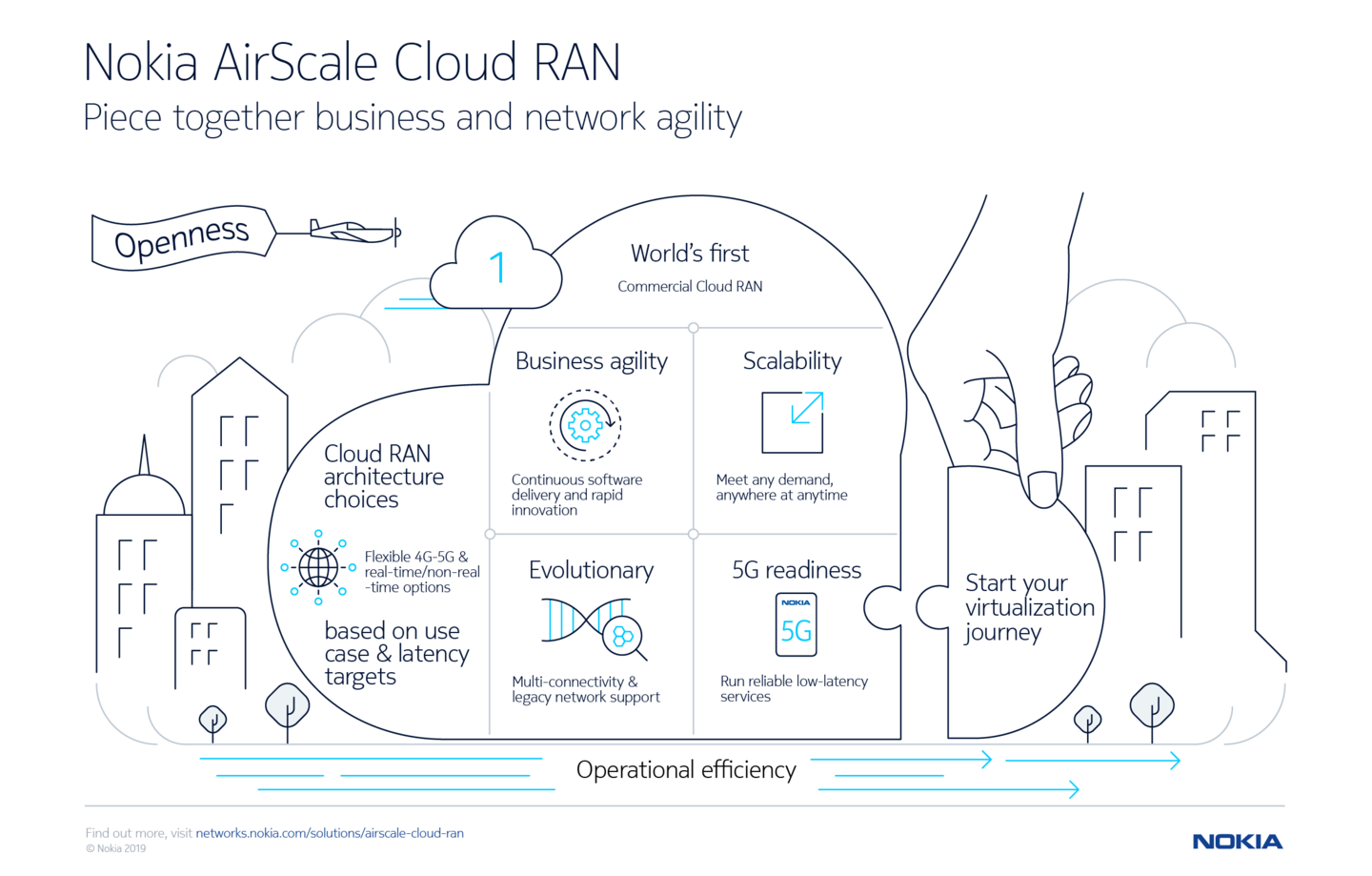Nokia announces the vRAN2.0 release of its 5G Cloud RAN
Nokia’s 5G Airscale Cloud RAN solution is based on Open RAN, and will enable CSPs to generate revenue from 5G services, supporting end-to-end network slicing and IoT 5G use cases.

Following a series of successful customer trials, including end-to-end 5G data calls over sub-6GHz frequency bands, with fully cloudified base station, Nokia has announced its next-generation 5G AirScale Cloud RAN solution based on vRAN2.0, which will be commercially available in 2020.
Cloud-based RAN solutions such as Nokia’s 5G AirScale Cloud RAN enable operators to generate revenue from new 5G services, and by using vRAN technology, communication service providers (CSPs) are able to deliver new services, and update existing ones, at a fraction of the cost; and according to research from Mavenir, CSPs can expect capex savings of almost 50%, and opex savings of 31%.

“The next-generation Nokia 5G AirScale Cloud RAN is a true innovation that will transform mobile networks and provide operators with the flexibility they need to meet the customer demands in the evolving 5G era,” said Tommi Uitto, President of Mobile Networks at Nokia. “Its flexible architecture offers speed, coverage, capacity and low latency as well as the opportunity to generate revenues immediately.”
Nokia 5G AirScale Cloud RAN
Nokia 5G AirScale Cloud RAN has been architected for Open RAN (O-RAN), splitting the base station into Radio Unit (RU), Distributed Unit (DU), Radio Access Point (RAP, combination of RU and DU), Centralized Unit (CU), and O-RAN compliant interfaces between these elements. It also includes the RAN Intelligent Controller (RIC) concept to take advantage of Artificial Intelligence (AI), Machine Learning (ML) capabilities to optimize the radio and system performance.
“Nokia has been more proactive and consistent in driving Cloud RAN technology than its peers, and the launch of its fully cloudified 5G AirScale Cloud RAN solution is only the latest example of its commitment.”
Ed Gubbins, GlobalData.
“Cloud RAN has the potential to fundamentally transform mobile networks, making them more agile and dynamic and allowing operators to be more nimble in activating new services and revenue streams,” explained Ed Gubbins, Principal Analyst at GlobalData. “Nokia has been more proactive and consistent in driving Cloud RAN technology than its peers, and the launch of its fully cloudified 5G AirScale Cloud RAN solution is only the latest example of its commitment.”
Nokia’s first generation 5G AirScale Cloud RAN based on vRAN1.0, which has a virtualized Central Unit (vCU), has been in commercial operation on a mmWave network in the US since early 2019. And Nokia’s new vRAN2.0 solution introduces a virtualized Distributed Unit (vDU) as well as a Fronthaul Gateway.
And with a fully cloudified vCU and vDU, Nokia 5G AirScale Cloud RAN brings the overall benefits of cloud computing familiar from IT and Core networks to RAN: pooling, scalability, elasticity, agility, uniformity, and automation. Operators can also deploy other network functions and services at the edge, on top of the Cloud RAN deployment. For example, this can be used for Mobile or Multi-Access Edge Computing (MEC) implementations that benefit from the proximity of content and processing close to the point of use.
Get up to speed with 5G, and discover the latest deals, news, and insight!
- Discover the best 5G networks in the UK and US
- Get your hands on the hottest 5G phones
- Millimeter wave: the secret sauce behind 5G
- The complete guide to 5G security
- We reveal the latest 5G use cases
- Discover the truth behind 5G dangers
- 5G towers: everything you need to know
Dan is a British journalist with 20 years of experience in the design and tech sectors, producing content for the likes of Microsoft, Adobe, Dell and The Sunday Times. In 2012 he helped launch the world's number one design blog, Creative Bloq. Dan is now editor-in-chief at 5Gradar, where he oversees news, insight and reviews, providing an invaluable resource for anyone looking to stay up-to-date with the key issues facing 5G.

